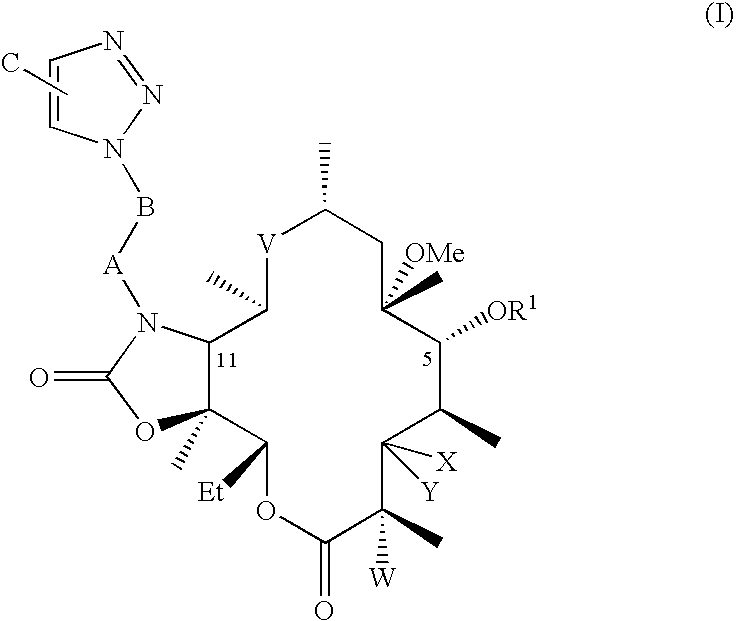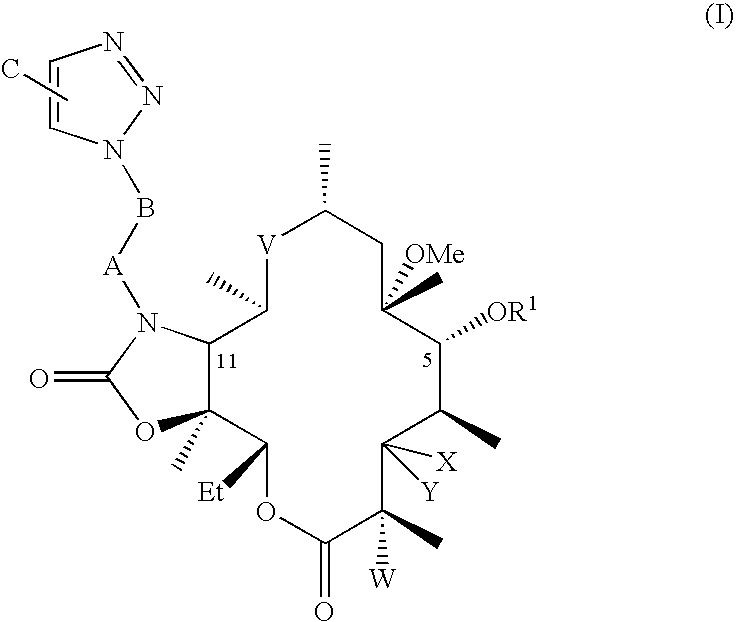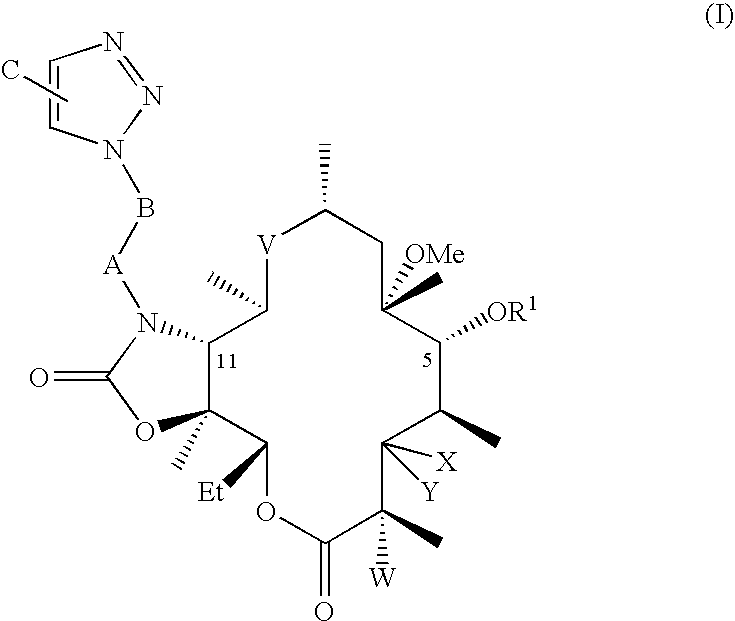Process for the preparation of macrolide antibacterial agents
- Summary
- Abstract
- Description
- Claims
- Application Information
AI Technical Summary
Benefits of technology
Problems solved by technology
Method used
Image
Examples
example 1
[0067]Preparation of 2′,4″-di-O-benzoyl-6-O-methylerythromycin A. 125 mL of ethyl acetate was added to 25 g clarithromycin A. 26.5 g benzoic anhydride, 5.7 g 4-dimethylamino pyridine and 6.7 g triethylamine were added to the reaction mixture at 25° C. to 35° C. The reaction mixture was stirred for about 70 hours at ambient temperature. After completion of the reaction, ethyl acetate was distilled out to obtain the title compound.
example 2
[0068]Preparation of 10,11-anhydro-2′,4″-di-O-benzoyl-12-O-imidazolylcarbonyl-6-O-methylerythromycin A. Dimethylformamide (DMF, 100 mL) was added to 2′,4″-di-O-benzoyl-6-O-methylerythromycin A at 25-35° C., then 1,8-diazabicyclo[5.4.0]undec-7-ene (DBU 6.4 g) was added to the reaction mixture and stirred at ambient temperature. 1,1′-Carbonyldiimidazole (CDI, 17 g) was added to the reaction and it was stirred until completion at ambient temperature. The title compound is isolated by addition of water, and collecting the resulting precipitate.
example 3
[0069]Preparation of 2′,4″-di-O-benzoyl-11-N-(4-Azidobutyl)-6-O-methylerythromycin A 11,12-cyclic carbamate. DMF (50 mL) was added to 10,11-anhydro-2′,4″-di-O-benzoyl-12-O-imidazolylcarbonyl-6-O-methylerythromycin A (10 g) at 25° C. to 35° C. 4-Azido butyl amine (4.4 g) and DBU (1.5 g) were added to the reaction mixture, which was stirred at 25° C. to 35° C. until the reaction was complete. The mixture was then treated with cold water, and the resulting solid precipitate was collected. The solid was treated with dichloromethane followed by extraction and removal of solvent to give the title compound. The mole-equivalent ratio of 4-azido butyl amine to 10,11-anhydro-2′,4″-di-O-benzoyl-12-O-imidazolylcarbonyl-6-O-methylerythromycin A is optionally selected to be from about 4 to 1 to about 3 to 1. The molar ratio of DBU to 10,11-anhydro-2′,4″-di-O-benzoyl-12-O-imidazolylcarbonyl-6-O-methylerythromycin A is optionally selected to be from about 1 to 1 to about 0.75 to 1.
PUM
| Property | Measurement | Unit |
|---|---|---|
| Fraction | aaaaa | aaaaa |
| Fraction | aaaaa | aaaaa |
Abstract
Description
Claims
Application Information
 Login to View More
Login to View More - R&D
- Intellectual Property
- Life Sciences
- Materials
- Tech Scout
- Unparalleled Data Quality
- Higher Quality Content
- 60% Fewer Hallucinations
Browse by: Latest US Patents, China's latest patents, Technical Efficacy Thesaurus, Application Domain, Technology Topic, Popular Technical Reports.
© 2025 PatSnap. All rights reserved.Legal|Privacy policy|Modern Slavery Act Transparency Statement|Sitemap|About US| Contact US: help@patsnap.com



